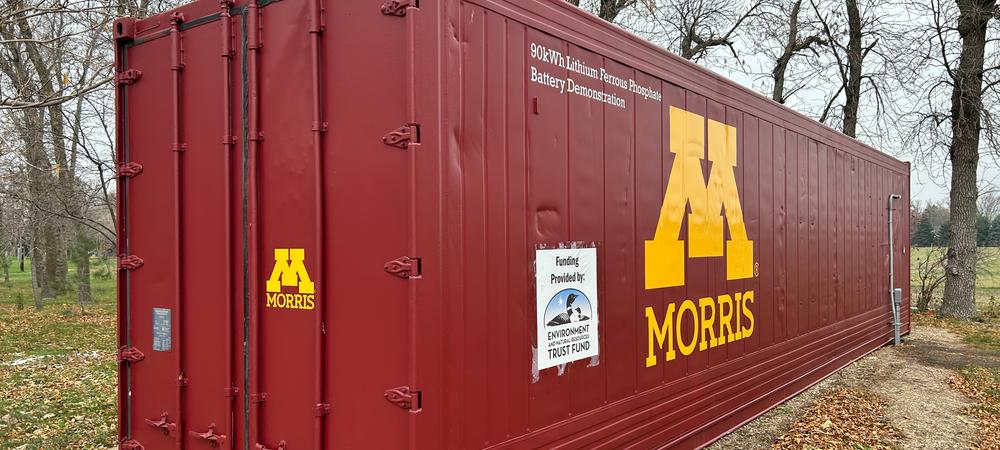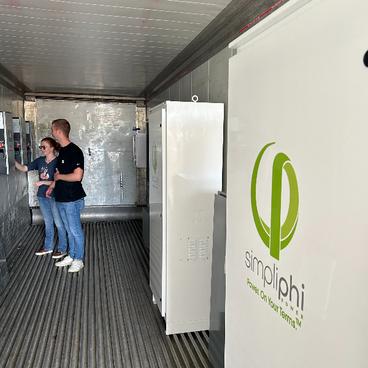
For the past eight years, UMN Morris has developed partnerships to advance our understanding of energy storage in Minnesota. This fall, a 90 kilowatt-hour lithium ferrous phosphate (LFP) battery was installed on-campus next to the Recycling Center inside an insulated shipping container. One goal of the project was to ensure the battery was installed by a local contractor to grow our region’s technical capacity. The battery will be used to simulate how a battery could “virtually” support the needs of a green building, specifically, the Green Prairie Community residence hall, which is currently connected to a 20kW solar PV array.

Bryan Herrmann, vice chancellor for finance and facilities at UMN Morris, led the installation. “Our campus is carbon neutral in electricity and generates enough renewable electricity to power over 60% of our campus and we send millions of kilowatt-hours of electricity to the grid as green power. We are interested in ways we can harvest these electrons, store them, and use them on-campus for a variety of purposes—including meeting our electricity needs and maybe even future thermal decarbonization pathways. This was one reason we launched CREST with partners—we want people to be able to see energy storage in action in rural Minnesota.”
The project has been an ongoing partnership with the Institute on the Environment to develop energy storage solutions at several locations in Minnesota. IonE developed the grant proposal for this project and provided the majority of funding to complete the project. The experience of the UMN Morris and the IonE team revealed the many complexities of developing an energy storage project. Initially, the team focused on a vanadium flow-battery that was built on a technology backbone developed at the Pacific Northwest National Laboratory. As the battery landscape churned, the team shifted to newer lithium-based chemistries for a first demonstration at UMN Morris. The LFP battery is a newer lithium-based battery that has some improved safety and sustainability features.
Dr. Melissa Kenney, IonE Director of Research and Knowledge Initiatives at IonE shared, “IonE is excited to see this project installed on the ground as UMN Morris’s first energy storage demonstration. We hope this will catalyze additional storage projects on-campus and in the community. We know UMN Morris hosts hundreds of visitors each year interested in sustainable energy.”
Labor for the project was also supported by the UMN West Central Clean Energy Resource Team (WC-CERT) SEED grant program, which provides funds for energy efficiency and renewable energy projects within Minnesota. The project also received support from the UMN Sustainable Green Fund.
Funding for this project was partially funded by a University of Minnesota, Institute on the Environment Impact Goal grant 2022 entitled “Building Scale Battery Demonstration Project”. It was also partially funded by the Minnesota Environment and Natural Resources Trust Fund (ML2018 07b) as recommended by the Legislative-Citizen Commission on Minnesota Resources (LCCMR). The Trust Fund is a permanent fund constitutionally established by the citizens of Minnesota to assist in the protection, conservation, preservation, and enhancement of the state’s air, water, land, fish, wildlife, and other natural resources. Currently 40% of net Minnesota State Lottery proceeds are dedicated to growing the Trust Fund and ensuring future benefits for Minnesota’s environment and natural resources.